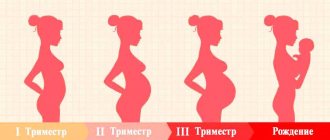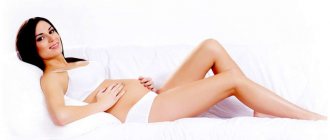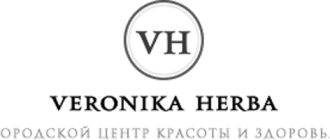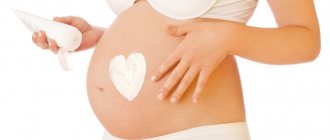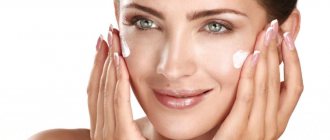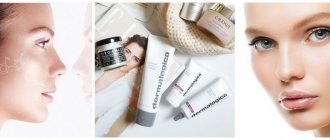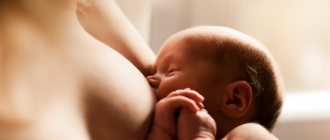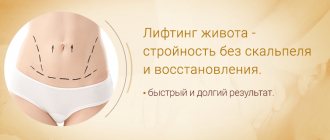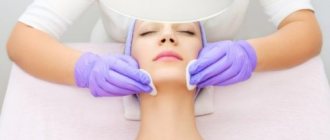Pregnancy is a time of change and maximum responsibility. Self-care turns into caring for two. It is during this period that most women, as a rule, begin to study the composition of cosmetics more carefully and think about switching to more natural products.
So, first you need to immediately eliminate harmful and dangerous substances from the composition of cosmetic products. And even if you haven’t noticed any allergic reactions before or couldn’t call your skin too sensitive, then during pregnancy everything can change and naturally, you shouldn’t take risks and use an untested or dubious product. After all, even what suited you perfectly yesterday may not suit the main person in your life today.
Skin care
Everyone knows that the skin of a pregnant woman’s face sometimes seems to glow from within. This is due to the fact that due to hormonal changes, more blood flows to the face and it looks refreshed. However, pregnant women also experience skin problems.
Age spots are a very common occurrence during this period. They can appear on the face, stomach and chest. As a rule, they go away within 4–5 months after the birth of the child.
However, to reduce their expression on the face, dermatologists strongly recommend using sunscreen with SPF of at least 30, and also not neglecting foundation - this will make you feel attractive and confident. By the way, BB and CC creams successfully combine the functions of moisturizing, sun protection and skin toning.
Acne - peeling and rashes on the skin of pregnant women - is associated with changes in the hormonal balance in the body. Skin may become drier, more sensitive and more prone to irritation. Don't worry, this is temporary.
- Use sun protection.
- Choose a new moisturizer for sensitive skin.
- Cleanse your skin with soft facial foams.
- Use anti-acne products, but first make sure that they do not contain substances that are not recommended for pregnant women.
What is acne?
The term “acne” often refers to diseases of different nature. Most often we are talking about acne (common acne). Acne can manifest itself with a variety of elements, both inflammatory and non-inflammatory.
Non-inflammatory elements include:
- Open comedones, commonly referred to as “blackheads.” The appearance of comedones is caused by stagnation of sebum in the pores, the formation of “sebaceous plugs”. When exposed to air, sebum oxidizes and the pigment melanin is formed, which gives a dark color to the contents of the pores.
- Closed comedones (milliums) resemble white subcutaneous nodules. This is an accumulation of sebum in a pore that is not in contact with oxygen.
The inflammatory elements of acne are:
- Papules are small red nodules that protrude above the surface of the skin.
- Pustules are cavities with purulent contents, in the center of each of which there is a hair.
- Nodules are a complex form of acne that has a chronic course.
Blackheads are large, deep, painful, purplish-red lesions.
What cosmetics are harmful for pregnant women?
Decorative cosmetics, as a rule, do not contain ingredients harmful to pregnant women. On the contrary, experimenting with makeup is a wonderful opportunity for pregnant women to take care of themselves and be positive.
With “care” products everything is different. Dermatologists recommend that during pregnancy you be attentive to what ingredients are in the creams, tonics and other cosmetics that a woman applies to her skin. The fact is that many substances can penetrate the skin and enter the bloodstream, which can potentially harm the child.
Here is a list of ingredients that are considered unsafe for pregnant women.
- Retinoids. They are usually added to anti-aging cosmetics. These are vitamins of group A, which accelerate the renewal of skin cells and prevent the breakdown of collagen, but they can harm the unborn baby if taken orally. Although there is no official data on the dangers of retinoids when used externally, doctors still recommend refraining from using cosmetics with this ingredient while expecting a child.
- Salicylic acid and BHA, one of its forms. It is used in a large number of cosmetics and is intended to treat acne. It also harms the unborn baby, primarily when taken orally. Doctors do not object to the external use of salicylic acid in creams or tonics - if its concentration does not exceed 2%. But if this additive is in scrubs and peels, salicylic acid penetrates deeper into the skin, and this is already considered unsafe for the baby.
- Soy. Products made from it are useful for pregnant women when added to the diet. How is soy harmful when used externally? Cosmetics based on this ingredient make age spots darker thanks to the phytoestrogens contained in soy. By the way, bergamot oil has the same effect.
Stages of the disease
A small amount of non-inflammatory elements - comedones or millia - is not acne. These are signs of contaminated skin that needs hygienic cleaning and the correct selection of home cosmetics. If papules or pustules in the amount of up to 10 join comedones and milliums, we are talking about mild acne. The average degree is characterized by the presence of all of the above elements; the number of papulopustular formations does not exceed 40. Severe acne is manifested by the number of inflammatory elements more than 40, the presence of cysts and scar changes.
In severe cases of the disease, complications are quite likely. The most common consequence of acne is hyperpigmentation, or persistent discoloration of the skin. In favorable cases, hyperpigmentation may disappear on its own after 6-12 months. But often it persists for a long time, so methods have been developed to combat it. Extensive inflammation can lead to the formation of scars.
How to deal with stretch marks
Is it possible to prevent stretch marks during pregnancy? Dermatologists say that genetic predisposition plays a key role here, and about half of women observe the appearance of stretch marks while expecting a child - on the stomach, chest, buttocks and thighs. Even special creams against the appearance of stretch marks will not protect against them. If women in your family have them on the skin, then you are not immune from their appearance. Here are the factors that can increase the likelihood of stretch marks:
- multiple pregnancy;
- rapid weight gain;
- you are carrying a large baby;
- you have excess amniotic fluid.
Dermatologists still recommend preventive measures:
- taking a contrast shower with simultaneous massage with a hard washcloth, you can use scrubs;
- daily moisturizing of the skin with vegetable oil, milk or body cream.
You can also smear the oil on the expectant mother’s tummy, but no one can guarantee that there will be no stretch marks. Don’t get hung up on this: if they appear, their manifestations can be reduced.
Nails and hair during pregnancy
Great news: while expecting a baby, the expectant mother's nails become stronger, and her hair becomes shiny and thicker. Surprises are also possible: wavy hair can become straight, or vice versa.
- •\tIt is worth keeping in mind that the hair seems thick not because more hair has begun to grow, but because it is now falling out less. In normal life, on average, we lose about 100 hairs per day, and during pregnancy, the process of hair loss slows down significantly. After childbirth, the hair will return to its normal state.
- Many women are concerned about excess hair growth on the face and body - do not worry, this is temporary. Choose a hair removal method that is convenient for you. However, remember that depilatory creams are not considered completely safe for pregnant women.
- Also, you should not start using a home epilator if you have not had such experience before: as a rule, the number of ingrown hairs increases during pregnancy, and it is extremely difficult to deal with them, so it is better not to increase the likelihood of their occurrence.
Is it possible to dye your hair during pregnancy?
There is no scientific evidence confirming the dangers of using conventional paint with ammonia during pregnancy. However, it is recommended to temporarily switch to more gentle, possibly unstable, paints or coloring instead of classic coloring.
- During this period, you need to especially strictly follow the instructions for hair dyes - check them for allergenicity by applying a little dye to the skin and waiting the right time. Do not under any circumstances try to dye your eyebrows or eyelashes with hair dye: this is very dangerous and can lead to irreparable consequences, including blindness.
It is worth remembering that during this period it is not recommended to experiment with perm: firstly, the substances included in the special mixture may be unsafe for the child, and secondly, the hair does not behave as usual. The result may be unpredictable.
How to treat acne during pregnancy?
Treatment of acne is carried out in several directions: eliminating blockage of the sebaceous glands, normalizing the process of exfoliation of dead skin cells, antibacterial effects. No less important is the correction of lifestyle and nutrition.
Recommendations for nutrition, lifestyle and skin care are suitable for any type of acne.
1. Nutrition. Acne is caused by eating foods rich in starch, fat, and spices. Strong tea, coffee, carbonated drinks, and sweets can also cause acne. In addition, they are not recommended for expectant mothers at all.
For fruits, give preference to apples, pears, and plums. Avoid citrus fruits and dried fruits; bananas and berries can be consumed in limited quantities. Vegetables are useful both raw and processed (preferably stewed or steamed). Eat porridge and unsweetened fermented milk products daily. The meat should be lean (chicken and veal are preferred).
2. Hygiene. You should wash and shower with warm or even cool water. For washing, you need soft, but at the same time effective auxiliary products (foam for washing). Large-pored sponges made from natural cellulose are not recommended, as they can damage the skin and cause infection. More suitable are disposable napkins made of non-woven material or soft terry cloths, which should be washed after each use and ironed with a hot iron. Use soft sponges and towels to care for your body. They must be individual. Towels should be washed in hot water.
3. Home pharmacy. For washing, you can use a decoction of chamomile, calendula, sage, celandine (pour 1 tablespoon of dry raw materials with a glass of boiling water - if you do this in the evening, you can wash with the decoction in the morning). It is acceptable to use water with the addition of lemon juice (1-2 tablespoons per liter of water). Once or twice a week you can make masks from white clay, masks from the pulp of cucumber, zucchini, chopped parsley (before applying to the face, add a teaspoon of lemon juice to the pulp). Apply the mixture to clean facial skin for 15-20 minutes, then rinse with cool water.
4. Medical cosmetics. There is a wide range of therapeutic skin care products. In addition to being highly effective, these products are characterized by careful dermatological control. The selection of such products should be carried out by a cosmetologist or dermatologist, especially during pregnancy, since some of them contain components contraindicated for pregnant women (for example, so-called retinoids - precursors of vitamin A, an excess of which can adversely affect the formation of the fetus).
Breast care during pregnancy
As a rule, everyone is ready for the fact that during pregnancy the breasts become larger - on average by 1 - 2 sizes. Her weight increases, and the ligaments cannot cope with the increased load. After breastfeeding is completed, it may become larger or smaller, everything is individual.
But if its size cannot be influenced, then is it possible to prevent the change in shape? Also, many women note that during pregnancy and childbirth, the nipples become larger and darker. Breast sensitivity may change during this period. What to expect?
1. As for the nipples, their size may decrease after breastfeeding ends, they may become lighter, but in each case everything is individual. The sensitivity of the nipples, as a rule, returns to the state it was before pregnancy.
2. Experts say that it is impossible to prevent changes in breast shape. This is a natural phenomenon. Here are some remedies you can resort to to make your breasts firmer:
2.1.1. after consulting with a specialist, do planks and other special exercises - they affect the pectoral muscles, and not the breast tissue, but nevertheless they can have an effect;
2.1.2. breast massage combined with almond, coconut or olive oil will improve skin tone. You need to be careful not to massage the nipple area, so as not to stimulate the production of oxytocin, which can cause uterine tone. It is recommended to do it about three times a week;
2.1.3. good posture, which can be achieved through yoga and gymnastics - as a result, the shape of the breasts improves;
2.1.4. It is recommended to wear special underwear, first of all, for comfort - during pregnancy, the breasts increase in size and need additional support.
How to choose a bra during pregnancy
Doctors believe that there is no urgent need to use specialized underwear for pregnant women. The main thing is that it does not squeeze the chest.
- Breasts grow in the 1st and 2nd trimesters, only reaching the size that will remain during the feeding period by the 3rd.
- You can choose the same bras for pregnant and nursing women and immediately buy bras that need to be partially unfastened for breastfeeding.
- When choosing a bra, it is important to pay attention to the fabric composition: cotton and lycra are preferable. Such underwear stretches when necessary without causing discomfort. The straps should be wide and the cups should cover the entire chest. There is no need to choose bras with underwires: they can move and pinch the duct during breastfeeding.
- From the second trimester, colostrum may be released from the nipples - use special bra inserts.
- How many bras should you buy? As a rule, women during pregnancy and lactation need three special bras.
Sources
- Ross-Davie M., Brodrick A., Randall W., Kerrigan A., McSherry M. 2. Labor and birth. // Best Pract Res Clin Obstet Gynaecol - 2021 - Vol - NNULL - p.; PMID:33879365
- Sabharwal V., Bartolome R., Hassan SA., Levesque BM., Camelo IY., Wachman EM., Figueira M., Yarrington CD., Cooper ER., Barnett ED., Parker MG. Mother-Infant Dyads with COVID-19 at an Urban, Safety-Net Hospital: Clinical Manifestations and Birth Outcomes. // Am J Perinatol - 2022 - Vol - NNULL - p.; PMID:33853145
- Yu Y., Zhang Y., Zhu X., Zhang C., Tong C., Zhao Y. . // Zhonghua Wei Zhong Bing Ji Jiu Yi Xue - 2022 - Vol33 - N3 - p.305-310; PMID:33834971
- Bezemer JM., van der Ende J., Limpens J., de Vries HJC., Schallig HDFH. Safety and efficacy of allylamines in the treatment of cutaneous and mucocutaneous leishmaniasis: A systematic review. // PLoS One - 2022 - Vol16 - N4 - p.e0249628; PMID:33826660
- Elango K., Javaid A., Khetarpal B.K., Ramalingam S., Kolandaivel K.P., Gunasekaran K., Ahsan C. The Effects of Warfarin and Direct Oral Anticoagulants on Systemic Vascular Calcification: A Review. // Cells - 2022 - Vol10 - N4 - p.; PMID:33807457
- Foessleitner P., Kiss H., Deinsberger J., Ott J., Zierhut L., Farr A. Validation of the SavvyCheck™ Vaginal Yeast Test for Screening Pregnant Women for Vulvovaginal Candidosis: A Prospective, Cross-Sectional Study. // J Fungi (Basel) - 2022 - Vol7 - N3 - p.; PMID:33804805
- Gonçalves-Ferri WA., Pereira-Cellini FM., Coca K., Aragon DC., Nader P., Lyra JC., do Vale MS., Marba S., Araujo K., Dias LA., de Lima Mota Ferreira DM ., Nieto G., Anchieta LM., de Cássia Silveira R., de Moura MDR., Tuma Calil VML., Moraes VCC., de Almeida JHCL., Magalhães M., Sonini TCB., Javorsky JB., Ribeiro ÉLA. , Ferreira R., de Almeida LDC., Garbers R., da Silva Faria GM., Roosch A., de Mesquita ARA., de Oliveira Pinto RM. The impact of coronavirus outbreak on breastfeeding guidelines among Brazilian hospitals and maternity services: a cross-sectional study. // Int Breastfeed J - 2021 - Vol16 - N1 - p.30; PMID:33789708
- Gurung R., Ruysen H., Sunny AK., Day LT., Penn-Kekana L., Målqvist M., Ghimire B., Singh D., Basnet O., Sharma S., Shaver T., Moran AC., Lawn JE., Kc A. Respectful maternal and newborn care: measurement in one EN-BIRTH study hospital in Nepal. // BMC Pregnancy Childbirth - 2022 - Vol21 - NSuppl 1 - p.228; PMID:33765971
- Ameen S., Siddique AB., Peven K., Rahman QS., Day LT., Shabani J., Kc A., Boggs D., Shamba D., Tahsina T., Rahman AE., Zaman SB., Hossain AT ., Ahmed A., Basnet O., Malla H., Ruysen H., Blencowe H., Arnold F., Requejo J., Arifeen SE., Lawn JE., Rahman QS., Rahman AE., Tahsina T., Zaman SB., Ameen S., Hossain T., Siddique AB., Hossain AT., Mazumder T., Khan J., Talha TUS., Haider R., Rahman MH., Ahmed A., El Arifeen S., Basnet O., Sunny AK., Thakur N., Gurung R., Jha AK., Jha B., Bastola RC., Paudel R., Paudel A., Kc A., Salim N., Shamba D., Shabani J. , Shirima K., Tarimo MN., Mbaruku G., Masanja H., Day LT., Ruysen H., Peven K., Gordeev VS., Gore-Langton GR., Boggs D., Kong S., Baschieri A. , Cousens S., Lawn JE. Survey of women's report for 33 maternal and newborn indicators: EN-BIRTH multi-country validation study. // BMC Pregnancy Childbirth - 2022 - Vol21 - NSuppl 1 - p.238; PMID:33765956
